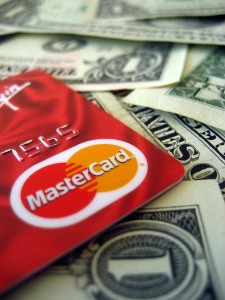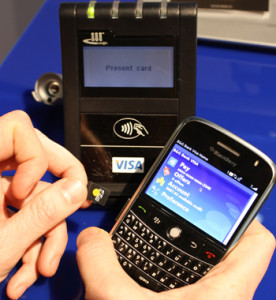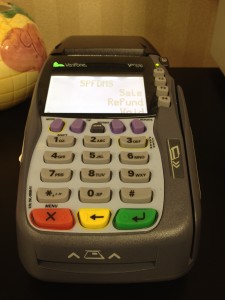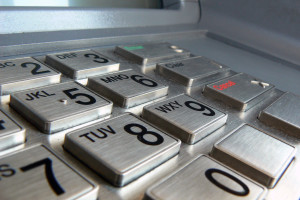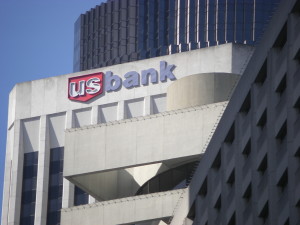April 17th, 2014 by Elma Jane
Issuers participating in the MasterCard Rewards Platform can pursue greater engagement and value in their programs through a partnership MasterCard is announcing today with Points International Ltd. The companies say they struck the deal to take advantage of the popularity of travel and related experiences. Under the agreement, participating issuers can let their cardholders to exchange and trade earned airline miles, hotel points and loyalty currencies.
Travel happens to be one of the most popular redemption options for points on most programs today. So this is really about enabling consumers to get even more choice with regard to getting some redemption options.
Issuers individually will roll out the program later this year based on their own schedules. Any of the hundreds of banks that use the MasterCard Rewards Platform are eligible to participate. Participation is voluntary.
Enhanced flexibility in cardholder reward redemptions was a key driver behind the initiative, what this partnership allows to do is enable all customers that have points that they’ve gained from spending on their credit cards or debit cards to then exchange those points into a miles program or a hotel program that they tend to always have a lot of other points accumulated already.
Variable Exchange Rates
Cardholders will be provided with a conversation ratio applicable to the pair of rewards being exchanged. Ratios will differ by redemption transaction. Consumers also may choose to transfer small buckets of rewards points into one program and the rest in other programs. They can do transfers multiple times and across multiple rewards providers.
Posted in Best Practices for Merchants, Credit card Processing, Gift & Loyalty Card Processing, Travel Agency Agents Tagged with: airline, airline miles, banks, cardholder, credit cards, debit cards, hotel, loyalty, MasterCard, platform, programs, reward, rewards, transaction, transfers, travel, travel related
December 5th, 2013 by Elma Jane
Recently, Consumer Reports reviewed 26 different prepaid cards and evaluated them based on different factors. The cards Consumer Reports considered to be the best scored well in each of these four factors:
- Clarity of Fees — How well the fees are disclosed.
- Convenience — Availability of in-network ATMs, bill pay features and how widely the card network brand is accepted.
- Safety — Whether funds are protected with FDIC deposit insurance.
- Value — How much they cost to use.
This is the first time Consumer Reports has evaluated and ranked prepaid cards, revealing a shift in the market for prepaid. As prepaid cards continue to grow in popularity, consumers are going to become savvier about which prepaid cards they purchase. Consider taking a closer look at this Consumer Report to determine how your financial institution’s (FI’s) prepaid offering measures up.
Highest ranked cards are those like the ATIRA suite of prepaid cards TMG’s clients issue. They have fewer fees and make it easier for consumers to avoid them, carry FDIC insurance for each cardholder, offer features comparable to traditional checking accounts and do a better job of disclosing fees.
Not surprisingly, the worst prepaid cards reviewed scored poorly in at least one, and sometimes several, of the above categories. All of the lowest ranked cards have high, unavoidable fees, including activation and monthly fees. Additionally, the lower scoring cards fail to make their fees clear and easy for consumers to access and understand.
Specifically, the report found some prepaid cards fail to provide clear explanations of how to use features such as electronic payments, text alerts and mobile remote deposit capture, and the fees that may be charged for them. Further, while all of the cards reviewed claim to offer some form of protection for consumers, the report found in these policies are often not clearly defined.
Consumer Reports also found it problematic that although issuers provide safeguards voluntarily, they can cancel them at any time. Additionally, according to the report, fee information is often hard to find and difficult to understand. The report states this problem is compounded by the lack of consistency with fee names and descriptions” from card to card, making it challenging for consumers to compare fees and costs. Consumer Reports also found that prepaid cards offered by some of the big banks are not necessarily less expensive than other prepaid cards. Also, these big bank offerings may be less attractive to consumers because they often don’t provide the option of making both electronic payments and payment by paper check.
Posted in Credit card Processing, Financial Services Tagged with: accounts, activation, ATMs, banks, bill pay, card network, cardholder, cards, costs, deposit, electronic payments, fees, financial institution, In-network, insurance, mobile remote deposit capture, monthly fees, paper check, prepaid, text alerts
November 19th, 2013 by Elma Jane

ISIS Electronic Wallet
Available Nationwide Isis Mobile Wallet
Latest version of the Isis Mobile Wallet has been announced. This is now available to consumers for download in the Google Play app store and at thousands of AT&T, T-Mobile and Verizon Wireless retail stores nationwide. Isis Mobile Wallet allows customers to pay at contactless payment terminals, and to save money through special offers and loyalty cards at participating merchants – all from their Isis Ready smartphone.
Today’s Isis Mobile Wallet nationwide launch is a milestone for consumers, merchants and banks. It’s the start of a smarter way to pay.
Together with Isis partners, a seamless mobile commerce experience have been built. Isis pleased to bring the magic and simplicity of the Isis Mobile Wallet to consumers across the U.S.
The redesigned Isis Mobile Wallet features a simplified user interface with a clean, white background and easy-to-navigate toolbars. Starting today, customers with one of the more than 40 Isis Ready smartphones available from AT&T, T-Mobile or Verizon Wireless can receive a free enhanced SIM card from their wireless carrier and download the Isis Mobile Wallet for free from Google Play. Integration with American Express Serve makes it convenient for Isis Mobile Wallet users to load funds to their American Express Serve Account from a U.S. debit or credit card, bank account, or through direct deposit, as well as pay bills online and send money to friends and family using an American Express Serve Account.
Posted in Digital Wallet Privacy, Electronic Payments, Mobile Payments, Near Field Communication, Smartphone, Visa MasterCard American Express Tagged with: American Express, AT&T, banks, bills, carrier, contactless, debit or credit, google, interface, ISIS, loyalty cards, Merchant's, mobile wallet, online, payment terminal, play app, smartphone, T-Mobile, Verizon, wireless
October 31st, 2013 by Elma Jane
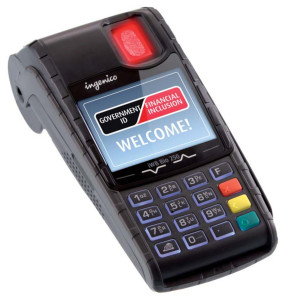
Ingenico Biometric Credit Card Terminal with EMV Chip and PIN Processing NFC.
Ingenico’s new biometric payment device (the iWB 220) is to be used in a pioneering project, to bring financial support to low-income families.
Payment solutions provider, Ingenico are to deploy Ingenico´s biometric solution in Colombia and the Dominican Republic, together with Carvajal Tecnología y Servicios, a player in the electronic payment industry in Latin America,
This biometric point of sale solution complies with the Image Quality Specifications for single finger capture device defined by the FBI, the United States Federal Bureau of Investigation.
In addition to high security standards, the solution is a mobile device with an embedded Magstripe, as well as Chip & PIN readers.
Upon government approval for each of the applications, funds will be sent to the banks and through the use of these unique devices, beneficiaries can withdraw their funds, with the use of a fingertip. Approved family members are the only ones able to withdraw the funds, and the government is assured that the benefit is being paid to the right person.
Posted in Credit Card Reader Terminal, Credit Card Security, Electronic Payments, EMV EuroPay MasterCard Visa, Payment Card Industry PCI Security Tagged with: banks, biometric, capture, Chip & PIN, deploys, device, electronic, finger, fingertip, funds, ingenico, iwb220, magstripe, mobile, paid, payments, readers, solution, withdraw
October 28th, 2013 by Elma Jane
With banks and shops starting to let customers pay by tapping their smart phones on terminals in stores, the future of plastic credit cards is looking shaky.
MasterCard, which has teamed with Coles and CommBank on these ventures, yesterday said Australians were rapidly embracing contactless payments using PayPass and rival Visa’s payWave. At Coles, six out of 10 MasterCard and Visa payments were contactless.
MasterCard head of market development and innovation for Australasia said three out of 10 MasterCard terminal payments were contactless and there were now more than 175,000 terminals nationwide that could accept them. More than 10 million MasterCards in Australia could make contactless payments.
An EMV (Europay, MasterCard and Visa) standard meant all terminals were capable of handling different brands of contactless payments.
The first stage of the contactless payments or “tap and go” revolution began with Visa payWave and MasterCard PayPass in Australia and the first institution to make contactless payments available locally was the Commonwealth Bank in 2006.
The next stage is to use smartphones rather than just plastic cards for contactless payments. Customers still use their Visa and MasterCard accounts, but the transaction is effected using a Near Field Communication sticker placed on the back of the phone, or an embedded, secure NFC element inside modern Android smartphones.
In Europe, NFC-enabled watches, wristbands, key rings and fobs also were being used for contactless payments and there was no reason this couldn’t happen here.
Visa said it had made a “significant investment” in a mobile NFC ecosystem.
“Visa is working closely with partners like Samsung, Vodafone and Optus on a range of mobile payment solutions that use the secure element and prepaid SIM models.”
CommBank, which previously enabled contactless payments from an iPhone housed in a special case, last week said it would let customers pay directly from their Apple phone using an NFC sticker, and from newer Android phones with embedded secure NFC technology.
The new facility, to be rolled out in the current financial year, is part of a revamp of the bank’s smartphones apps.
Coles said contactless payments had increased in the past year by more than 70 per cent while CommBank’s volume of contactless payments had increased six fold in 12 months. Westpac said it was piloting an Android mobile contactless payment application and was also investigating smartwatch payments.
“We also believe that the next big trend after the rise of mobiles and NFC in Australia will be mobile checkouts, where shoppers purchase products and have them delivered within two or three clicks,” a spokeswoman said, and the moves were “as big a market shift as we’ve ever seen”.
Coles also announced a trial of its own contactless payments technology using NFC stickers. Funds would be drawn from Coles Rewards MasterCards. Some 5000 mobile phone tags would be issued in a trial.
ANZ said it was continuing its trial of a mobile wallet for Android phones begun last year, ahead of making the solution available to customers.
“Our NFC pilot with Samsung and Optus is tracking well and we’re also investigating other payment options such as QR codes,” an ANZ spokesman said.
“Given the fragmentation of the market, we will continue to monitor developments before finalising how we will bring a viable mobile wallet solution for our customers to market.”
St George Bank chief information officer said his bank planned to have a contactless phone payments solution in the market “sometime in 2014”.
The bank has previously been reported to be looking at payments via the Pebble and Samsung smart watches.
National Australia Bank, which unveiled its peer-to-peer payments app, NAB Flik, last month, said it was watching how the contactless payments market developed with “less focus on being first to market and more focus on being best in market.”
The Australian reported last month that Apple and PayPal were exploring an alternative to NFC-enabled contactless payments called iBeacons. When you pass close to a store in a shopping centre, a beacon will detect your phone’s presence and automatically alert you to signature items for sale and specials, or offer other information to lure you inside, and process payments.
CommBank last week told The Australian it was looking at iBeacons technology.
Posted in Credit card Processing, Electronic Payments, EMV EuroPay MasterCard Visa, Near Field Communication, Visa MasterCard American Express Tagged with: accounts, Android, banks, checkouts, contactless, embedded, EMV, EuroPay, fobs, Iphone, MasterCard, mobile, mobile wallet, Near Field Communication, nfc, optus, payments, paypass, paywave, phone, plastic credit cards, prepaid, process payments, qr codes, Samsung, secure, shops, sim, smart phones, Smartphones, smartwatch, sticker, store's, Tags, tap and go, tapping, terminal, terminals, transaction, visa's, vodafone
October 21st, 2013 by Elma Jane
Good time for merchants to start noting how their provider is handling card company fee changes as well as any future rate and fee changes, especially if your contract will expire in 2014.
October 2013 Rate and Fee Increase Notices
Visa, MasterCard, and Discover Credit card companies generally make rate and fee changes in the April and October time frame, although they have also made changes at other times of the year. Inevitably, some banks and merchant account providers seem to take advantage of the card company changes by increasing or adding their own mark-ups and by pointing too much of the blame at the card companies for the increases. This time around isn’t much different than others and merchants have sent me some rate and fee increase notices that go well beyond any card company changes.
In understanding how your provider is handling the latest card company changes, keep in mind that there are two important changes for October 2013:
Discover introduced a .25 cent increase to all transactions.
MasterCard introduced a .25 cent increase to certain transactions.
Below are two examples of recent notices on the October changes. Understanding the above .25 cent changes, how would you rate these providers?
Notice 1: 0.02 Percent + $0.02 Increase
“MasterCard, Visa and Discover typically evaluate the Interchange rates and fees twice per year most often in April and October. Based on recent changes as well as analysis from other network providers and vendors, the following changes to your merchant account are being implemented and will be reflected in your merchant statements for transactions processed beginning in October:
Interchange Plus Merchants: Percentage charged in excess of Interchange will increase by 2/100ths of a percent; and
Transactions Fees for all authorized transactions will increase by $0.02/transaction.”
Tiered Pricing Merchants: Qualified Rate for Visa, MasterCard and Discover will increase 2/100th of a percent;
Notice 2: 0.40 Percent Increase
“Effective October 1, 2013, the discount rates charged for your Visa, MasterCard, and Discover (as applicable) credit card and non-PIN (signature) debit card transactions will increase by 0.400%. We have increased these charges based on a variety of factors, including recent Card Organization changes and our own pricing considerations. This change will appear beginning with your October month-end statement you will receive in November.”
Your Statements Now go back to the statements you received in August and September or any notices you received via mail and read the notice your provider posted for these changes. Did the provider announce the actual change or did it state something quite differently? If it’s the latter, make sure it adjusts pricing accordingly. Also, make sure you monitor your rates, fees, and notices going forward to determine the best long-term course of action. If the provider needs you to extend your contract to correct its overcharges, then there are probably bigger pricing issues and more assertive action required by you to investigate your overall processing cost.
EMV Capable Terminals
To reduce fraud in the U.S., the card companies are introducing cards that have a chip as well as the current magnetic strip. Chip cards are prevalent outside the U.S. and EMV — Europay, MasterCard, and Visa — established the technical standards for processing them.
Brick-and-mortar merchants should understand about EMV.
Brick-and-mortar merchants should have equipment capable of processing EMV chip card transactions by October 2015 as certain fraud liability will shift from the bank that issued the card to the merchant. The equipment may be a terminal or a chip card reader attached to the terminal or POS system.
Certain credit card transactions will require a PIN number instead of a signature similar to PIN debit transactions today. Also, like the current PIN debit devices, each chip reader will need to be encrypted and the encryption code is processor specific. Therefore, if a merchant has an encrypted device, changing processors may be more costly as the encryption cannot simply be downloaded over the phone or Internet as is done with terminal reprogramming now. Instead, the encrypted device will need to go back to the provider for encryption or swapped with an encrypted device or a new encrypted device may be needed.
“EMV capable” can mean very little. In fact, if you have purchased or leased an “EMV capable” terminal it may simply mean that it has the slot or contactless connection to place the chip card and the terminal may have the capability to eventually be encrypted to actually process chip cards. However, the cost and time required to do so could be prohibited.
However, merchants should be planning to have equipment capable of processing chip card by October 2015. In fact, they should be planning to have the equipment capable of processing chip cards well ahead of the October 2015 — perhaps as early as late 2014, to ensure receiving it in time.
If a merchant’s existing terminal fails or is no longer supported, the merchant should inquire about EMV terminals as a replacement. However, ask if it comes fully encrypted and capable of actually processing an EMV transaction or if it will need the encryption later. Right now, the answer is likely that the terminal will need encryption later. If so, the merchant should obtain the time frame, process, and cost for enabling the terminal to actually process chip cards. This should be in writing. Remember, new terminals cost the provider around $150 to $250 and the encryption may be an extra $25 to $50.
Make sure you are comfortable with your provider and have negotiated the best processing cost before changing to encrypted EMV equipment.
Merchants do not need EMV terminals today and very few providers actually have terminals that can process an EMV chip card transaction right now.
Posted in Credit card Processing, Electronic Payments, EMV EuroPay MasterCard Visa, Visa MasterCard American Express Tagged with: authorized, banks, chip card, contactless, cost, credit-card, debit, devices, Discover, EMV, encrypted, fee, increase, interchange, MasterCard, merchant account providers, network, overcharges, percent, percentage, PIN, POS, pricing, processor, prohibited, rate, rate and fee, statements, terminal, transactions, visa
October 15th, 2013 by Elma Jane
Banking and payments technology provider FIS and City National Bank, a private and business bank, have partnered to pilot FIS’s Cardless Cash Access at City National ATMs in Los Angeles, New York City and San Francisco. The solution lets consumers stage an ATM transaction from their mobile devices.
City National plans to introduce the emerging technology to clients in its three largest markets early next year, according to an FIS announcement, continuing FIS’ rollout of the solution at banks and ATMs in key U.S. locations.
FIS said Cardless Cash Access securely authenticates a user on his or her smartphone. The consumer then uses the phone to select the account and amount of the withdrawal. At the ATM, the consumer scans a QR code on the ATM screen and, within seconds, the cash is dispensed and an e-receipt is sent to the phone.
Consumers continue to look for innovative new ways to engage with their financial institutions via mobile devices, FIS Mobile, said in the release. At the same time, they demand additional security to keep their information safe. Information from Cardless Cash Access is maintained in the cloud, so card data cannot be accessed if the consumer’s phone is lost or stolen – making this a faster, safer, more secure way to make a withdrawal.”
To decrease fraud, FIS said, security within Cardless Cash Access is provided through the app’s authentication and registration of a user’s smartphone, which the company said eliminates card skimming risk and fraud incidents for banks and their clients.
With the proliferation of debit and access to cash at the point of sale, financial institutions are looking for ways to expand the utility of the ATM,” Senior vice president and head of product strategies, Vince Hruska, City National Bank, said in the release. “Cardless Cash Access not only provides a secure and easy way to obtain cash from an ATM, but introduces to the client a new way of looking at ATM use.
Posted in Financial Services Tagged with: account, amount, atm, authenticates, banking, banks, card, cardless, cash, data, e-receipt, emerging, financial, Mobile Devices, national, payments, QR code, securely, Security, Skimming, smartphone, transaction
October 11th, 2013 by Elma Jane
U.S. Bank and Monitise will develop a mobile shopping experience that includes product selection and instant checkout payment capabilities. Leveraging digital and audio watermarking and scanning technology for product discovery, an initial pilot will integrate mobile action codes, mobile shopping and mobile payments.
Mobile money solutions provider Monitise and U.S. Bank announced an agreement to accelerate the delivery of a product discovery and shopping service that the companies say will make it easier for top-tier retailers to help consumers interact with and buy from leading brands via mobile.
“Technology is creating new ways to bank and buy, and U.S. Bank is committed to playing a leading role in the digital commerce revolution as money becomes more mobile,” developing mobile money services has been a key focus for the company.
“As mobile technology accelerates the convergence between the offline and digital worlds of banking, payments and commerce, banks are identifying new revenue streams and driving value for both retailers and consumers,”
Posted in e-commerce & m-commerce, Electronic Payments, Financial Services, Mobile Payments Tagged with: banking, banks, checkout, convergence, electronic, etailers, mobile, mobile action codes, mobile shopping, money, payment, Scanning
September 26th, 2013 by Elma Jane
Convergence of mobile banking, ATM channels is a given
Auriga, Diebold, NCR and Wincor Nixdorf International have all demonstrated their mobile phone-based cardless cash withdrawal solutions. It is interesting to note that all of these vendors have embraced the QR code technology…a clear endorsement for a technology that is secure, low-cost, and readily available.
It doesn’t take a deep examination to realize that the mobile banking and ATM channels are heading toward convergence, and when the fusion of these dominant channels occurs, the consumer should be at the heart of it.
Auriga has advanced this idea by combining cardless ATM withdrawals with its mobile payments solution. The company has also added an option to make payments using a bank account rather than a card to support those consumers who do not embrace, or do not qualify for, traditional bank cards.
Not surprisingly, many large retailers are watching these developments with keen interest, ever mindful of the significant interchange fees they pay for accepting card based payments.
Although cardless ATM withdrawals and mobile payments are exciting, they are only the start of a deeper, multi-channel convergence. The real channel convergence is not happening at the endpoint devices, it is happening internally within the banks and processors, where modern, flexible technologies are being increasingly deployed to augment or replace yesterday’s legacy infrastructure.
The abilities to centralize business services to save costs, to easily deploy services over any channel for greater consumer choice and to achieve faster times to market for new services are no longer “nice to have” luxuries — they are now “must have” attributes to stay in the game.
It is little wonder that leading banks are shifting their IT investments away from solutions that perpetuate a fragmented services approach in favor of true multichannel systems that facilitate the ultimate consumer experience.
“Channel convergence does not mean that the ATM or the mobile device is at the center, it means the consumer is at the center.”
Once the consumer is placed at the center of your self-service strategy, you quickly realize it is their needs and preferences that should rightfully guide your approach.
The real secret is to allow consumers to interact with their bank the way they want to…with as few restrictions as possible. There is no magic silver bullet that will suit every consumer’s needs.
Banks can create deeper and more enduring relationships with their customers by implementing personalization profiles that allow consumers to tailor their own service experience.
MySpend solution is an excellent illustration of how banks and consumers can better cooperate to combat fraud, consumers can define their own use rules to significantly improve the accuracy of any fraud detection system. For example, card transactions from specific countries can be readily declined if a consumer knows that he or she will not be there, it also provides consumers with an instant notification of their transactions and the means for them to immediately flag any transaction they did not perform.
The use of consumer-specific profiles can be easily extended beyond the anti-fraud focus of MySpend solution. For example, Auriga’s Internet banking solution allows consumers to choose their own login security options from the bank-approved list, including an option for phone-based authentication using QR codes. More broadly, consumer-configured use profiles can improve the entire consumer experience, regardless of the chosen service channel.
Auriga’s ATM solution includes an intelligent menu that automatically tracks the consumer’s transactions and presents the most frequently used transactions on conveniently accessed menu buttons.
“The technology already exists to allow (consumers) to customize their own ATM menu through their mobile or Internet banking channel.” “It is only a matter of time to see the widespread adoption of this advanced customer-centric convenience.”
Ultimately, the business challenges are not about technology; they are about learning how to use the technology to promote growth and identify new competitive advantages. A recent ATM Marketplace report said that “the bank of the future will be a multichannel, multifunction and multi-device environment.” Given the current evidence, it seems this is a sentiment everyone can agree with.
Posted in Electronic Payments, Mobile Payments Tagged with: banking atm, banks, card based payments, convergence, diebold, interchange fees, mobile banking, Mobile Payments, mobile phone, QR code, secure, technology

